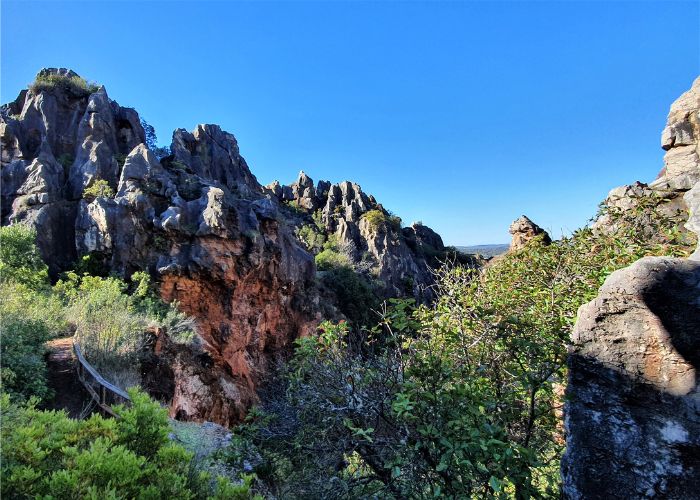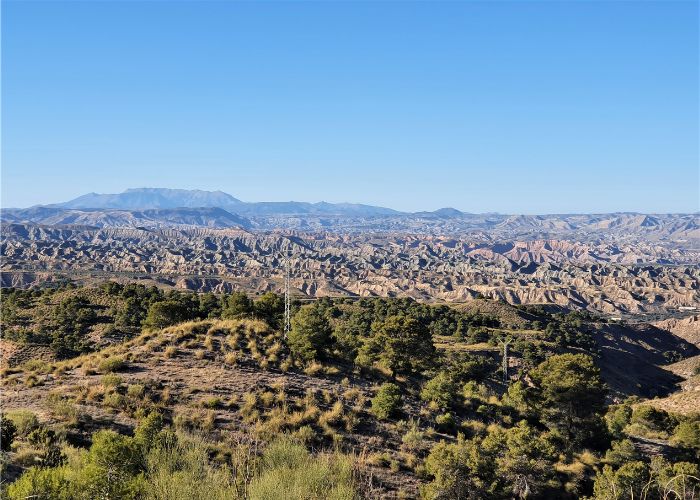UNESCO has designated 161 locations worldwide in 44 countries as geoparks. Of these, 15 are in Spain. A visit to these often special landscapes will teach you more about Spanish history.
For 20 years now, the international network of geoparks has been supported by UNESCO (the United Nations Educational, Scientific and Cultural Organisation). Since 2015, all these geoparks have been allowed to call themselves ‘UNESCO Global Geopark’. Moreover, these are the fifteen Spanish geoparks that offer more insight into the country.
Geopark Sierras Subbeticas (Cordoba)
This area was still the bottom of a sea many millions of years ago. Remnants of that ancient seabed can be admired here thanks to fossils in the limestone rocks. Many hiking trails lead visitors through the mountains and past beautiful white villages such as Zuheros, Luque and Cabra.
Geopark Cabo de Gata-Níjar (Almeria)
This geopark in the extreme southeast of Spain offers one of the most extreme landscapes of the Iberian Peninsula. Crystal-clear water contrasts beautifully with the volcanic coast where you can enjoy dunes, lagoons and hidden beaches.
Geopark Sobrarbe-Pirineos (Huesca)
Sobrarbe is located in the heart of the Pyrenees and forms one of the most beautiful mountain landscapes in Spain. The interplay of rocks, vegetation and water provides insight into how the Pyrenees once formed. In addition to a great geological variety, the ecological legacy in this area is also great.
Geopark Costa Vasca (Gipuzkoa)
This geopark features Flysch, a succession of sedimentary rocks formed in deep marine foreland basins on the edge of a forming mountain range. Thanks to the information centre on-site, it is the perfect place to learn more about the last 60 million years of this Earth.
Geopark Sierra Norte in Seville
Geopark Sierra Norte in Seville (in the central part of the Sierra Morena) is the largest geopark in Andalucia and its geological richness is enormous. For example, the rocks at Cerro del Hierro and the waterfalls of Huéznar are very interesting to visit.
Geopark Villuercas-Ibores-Jara (Cáceres)
Mountains and valleys bring you here in the heart of Extremadura where forests in the lower part are home to many special places. No fewer than 45 geolocations have been categorised in this geopark. The rocks tell you the story of this place from no less than 580 million years ago.
Geopark Cataluña Central
The most famous place of Geopark Cataluña Central is Montserrat. You can see this place of pilgrimage high on the unusually shaped rocks from afar. In addition to the fossils and minerals present, the caves of Toll and Salnitre are worth a visit.
Geopark Molina y el Alto Tajo (Guadalajara)
This area of about 4,000 square kilometres contains interesting and important geological highlights, such as fossils from the seabed that are millions of years old and the forests of the Sierra de Aragoncillo. The eleven geo-routes are very special and the Tajo viewpoint is especially beautiful in autumn.
Geopark Isla de El Hierro (Canary Islands)
In the Atlantic Ocean off the coast of Africa, El Hierro is one of the smallest islands in Spain, but it has the most volcanic rocks of this archipelago. In 2011, another submarine volcanic eruption occurred in the Mar de Las Calmas. Consequently, the geopark offers a very diverse volcanic landscape together with densely vegetated plains.
Lanzarote Geopark and Chinijo Archipelago (Canary Islands)
The Canary Island of Lanzarote offers geological spectacles wherever you look. The Geoparque Lanzarote was added to the UNESCO list in 2015. The Timanfaya National Park should not be missed, but La Geria, la Caldera Blanca and the volcano Cuervo are also worth a visit and offer insight into a relatively young geological landscape.
Geopark Las Loras (Castile and León)
Between Burgos and Palencia, water erosion is the cause of the very special worn and eroded rocks and caves. Neolithic dolmens, remnants from the Iron Age and lots of nature can be admired here. Sports enthusiasts and outdoor enthusiasts will certainly get their money’s worth in Geoparque Las Loras.
Geopark Origens (Lleida)
Geoparque Orígenes in Catalonia was the setting for dinosaurs millions of years ago. Many remnants of this creature have been found here. You can find a lot about this in the information centre. The rough, rocky landscape tells of what it must have been like 550 million years ago. Incidentally, this is also a great place for stargazing.
Geopark Montanas do Courel (Lugo)
This landscape takes you to 500 million years ago. Since Roman times, there were many mines exploited. The geopark is dominated by slate and the valleys, gorges and rocks take you along part of the world-famous Camino de Santiago.
Geopark Maestrazgo (Teruel)
An extensive route network provides a journey through the history of the past 200 years of this geopark. Mountains, rocks, valleys and caves are home to important archaeological finds including rock art and remote villages. This is the perfect place for those looking for tranquillity.
Geopark of Granada
The Geopark of Granada is located on the north side of the Sierra Nevada high mountains. Remnants of the seabed formed over millions of years into a surrealistic landscape that can be admired in the area of Guadix and Baza. Over the years, the area aroused much interest among geologists and palaeontologists. The largest concentration of dolmens in Spain can be admired here. The georoute of Desierto de Gorafe is well known. In some villages within this area, you can also see the famous cave houses. This geopark is also called the ‘Cappadocia of Granada’.
Also read: Cascamorras event in Guadix and Baza during September




